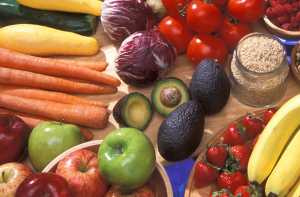01 Dec Vast Majority of Adults Do Not Consume Enough Fruit and Vegetables
MedicalResearch.com Interview with:
Seung Hee Lee-Kwan, PhD
Epidemiologist, Division of Nutrition, Physical Activity, and Obesity
Centers for Disease Control and Prevention (CDC).
Seung Hee Lee-Kwan has a PhD in International Health at Johns Hopkins Bloomberg School of Public Health. Her previous work focused community-based interventions that aimed to promote healthy eating. Dr. Lee-Kwan’s current work at CDC is on fruits and vegetable surveillance, and research of health behaviors and environmental factors associated with obesity.
MedicalResearch.com: What is the background for this study?
Response: The purpose of the study was to update a 2013 report that estimated how many people in each state are meeting fruit and vegetable intake recommendations with the latest data from 2015. These estimates looked at the percent of adults meeting the intake recommendations by age, sex, race/ethnicity, and income-to-poverty ratio for the 50 states and District of Columbia (DC).
MedicalResearch.com: What are the main findings?
Response: Overall, just 12.2% of Americans met the fruit intake recommendation and 9.3% met the vegetable recommendation in 2015. More women met both the fruit and the vegetable recommendations (15.1% and 10.9%, respectively) than did men (9.2% and 7.6%, respectively). Young adults aged 18–30 had the lowest percentage of meeting the fruit and the vegetable recommendations, while adults over age 51 had the highest percentage. A significantly higher percentage of people not living in poverty met the vegetable recommendations.
MedicalResearch.com: What should clinicians and patients take away from your report?
Response: Regardless of sociodemographic subgroup, the vast majority of adults do not consume enough fruits and vegetables. Eating a diet rich in fruits and vegetables can help reduce the risk of many leading causes of illness and death, such as cardiovascular disease, type 2 diabetes, some cancers, and obesity. It can also add important nutrients that are commonly missing in Americans diet. And it can help with weight management if adults FV instead of other calorie dense foods. Despite these positive health benefits, few adults are meeting the recommendations.
MedicalResearch.com: What recommendations do you have for future research as a result of this study?
Response: Despite the positive health benefits of consuming fruits and vegetables, the findings from this study corroborate data showing that the vast majority of adults consume insufficient amounts in all subgroups. Future research could use this information to inform the development of policies and programs that help all adults regardless of sociodemographic groups to consume more fruits and vegetables and thus help prevent costly chronic diseases.
MedicalResearch.com: Is there anything else you would like to add?
Response: We will continue to follow the fruits and vegetable consumption trends over time. Our goal is to help support Americans’ journey to good health, especially those most vulnerable to chronic disease. We develop and share evidence-based approaches that help make healthy living, such as fruits and vegetable consumption, easier for everyone. One tip we offer individuals to increase fruit and vegetable consumption is to try and fill half of their plate with fruits or vegetables at each meal or every eating occasion. Making fruits and vegetable the focal point of your meal will help you meet your recommendation. For example, try adding berries to your morning oatmeal or grab a piece of fresh fruit as an afternoon snack. For vegetables, try adding more into your lunch by adding a side salad, or packing a snack of baby carrots or grape tomatoes.
All authors do not have any conflict of interest to disclose.
MedicalResearch.com: Thank you for your contribution to the MedicalResearch.com community.
Citation:
Lee-Kwan SH, Moore LV, Blanck HM, Harris DM, Galuska D. Disparities in State-Specific Adult Fruit and Vegetable Consumption — United States, 2015. MMWR Morb Mortal Wkly Rep 2017;66:1241–1247. DOI: http://dx.doi.org/10.15585/mmwr.mm6645a1.
https://www.cdc.gov/mmwr/volumes/66/wr/mm6645a1.htm#suggestedcitation
Note: Content is Not intended as medical advice. Please consult your health care provider regarding your specific medical condition and questions.
[wysija_form id=”1″]
Last Updated on December 1, 2017 by Marie Benz MD FAAD


